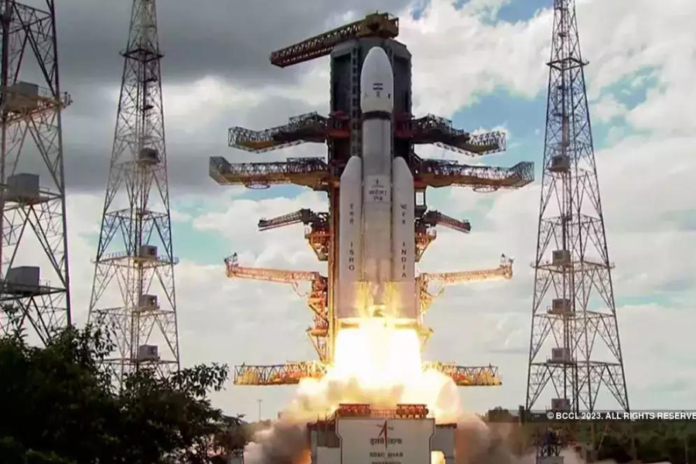A safe landing of the ‘Vikram’ lander on the Moon is now the lander’s final and most crucial task, according to former Indian Space Research Organisation (ISRO) scientist Mylswamy Annadurai, following the successful separation of Chandrayaan-3’s Vikram lander module from the propulsion module on Thursday.
According to former ISRO scientist and Padma Shri awardee Mylswamy Annadurai, the Vikram lander must now work independently and then separate before the Chandrayaan-3 can land on the moon.
“The crucial and last step is to now safely and softly land on the moon. The lander must split from the propulsion module to accomplish this. As of right now, the propulsion system’s modules have all achieved their functionality and performed their functions,” he told the media.
“Vikram must now decide how to go on its own. It also needs to separate. The key event therefore occurs even after the separation. The 4800 Newton thrusters are a noteworthy occurrence. To get it into the lower orbit, they must fire. Along with making sure all the systems are functioning properly, that will also be accomplished in two steps. These two actions will take place and create a 100-kilometer orbit. Then, from 100, move to a 30-kilometer orbit; this is absolutely crucial. However, when it gets very close to the Earth,” he added.
He continued by saying that the module’s position must be accurately determined. How to travel, how to thrust, what orientation to fire, and whether along it will diminish the horizontal velocity are therefore important considerations starting at 30 kilometres. After that, it must combine vertical fall with vertical fall and reduce. Therefore, there will be several movements to be made. Additionally, it must ensure that it is following the right course at all times. There will therefore be already-loaded images of the lunar surface. Compare it to that and try to locate the location where it should land. Additionally, it should have already been loaded in the system.
He informed that all these activities will be done by the lander which will start its actual work from today.
The ‘Vikram’ lander module of India’s Chandrayaan-3 spacecraft successfully split from the propulsion module on Thursday, marking another major victory in the mission’s journey for the moon.
The Chandrayaan-3 mission’s lander bears Vikram Sarabhai’s name. Vikram Sarabhai, who lived from 1939 to 1971, is widely regarded as the founder of India’s space programme.
A week before its planned landing on the south pole of the moon on August 23, the Chandrayaan-3 spacecraft completed its penultimate lunar-bound orbit lowering manoeuvre on Wednesday.
The spacecraft was launched on August 5 into lunar orbit using a GSLV Mark 3 (LVM 3) heavy-lift launch vehicle, and since then it has been lowered closer to the moon’s surface through a series of orbital manoeuvres.
The Chandrayaan-3 mission was launched by the Indian Space Research Organisation on July 14 and has remained in orbit for one month and two days. The Satish Dhawan Space Centre in Sriharikota, Andhra Pradesh, served as the launchpad for the spacecraft.
India would become the fourth nation in the world to do a soft landing on the moon after the US, Russia, and China if ISRO succeeds in its mission.Chandrayaan-3 is the ISRO’s follow-up attempt after the Chandrayaan-2 mission faced challenges during its soft landing on the lunar surface in 2019 and was eventually deemed to have failed its core mission objectives.
The key scientific outcomes from Chandrayaan-2 include the first-ever global map for lunar sodium, enhancing knowledge on crater size distribution, unambiguous detection of lunar surface water ice with IIRS instrument and more.



